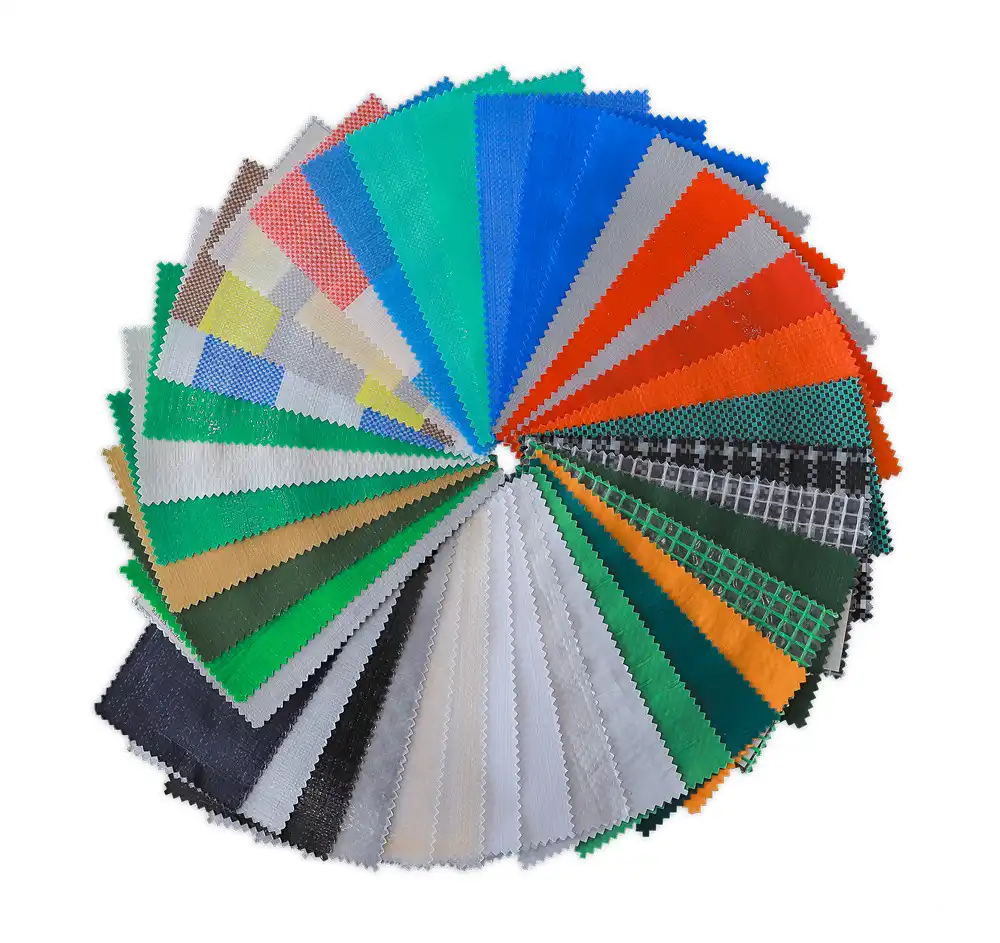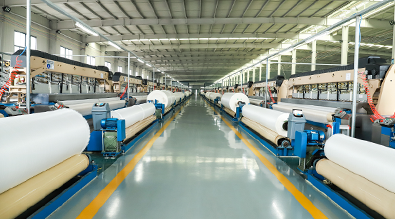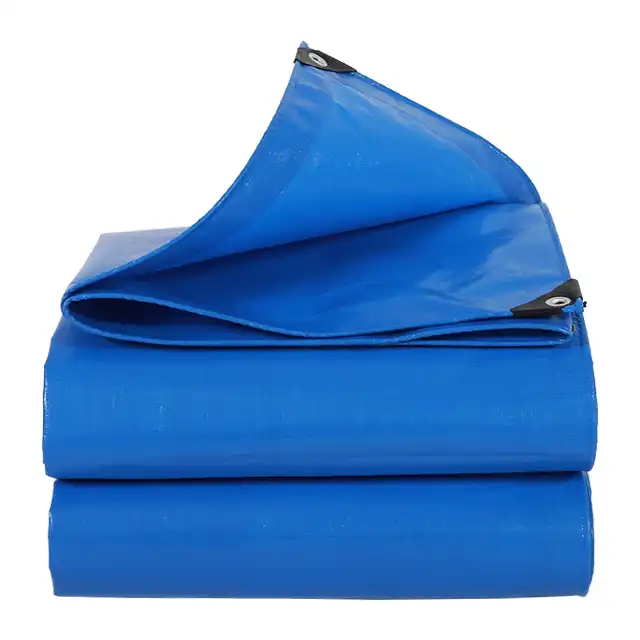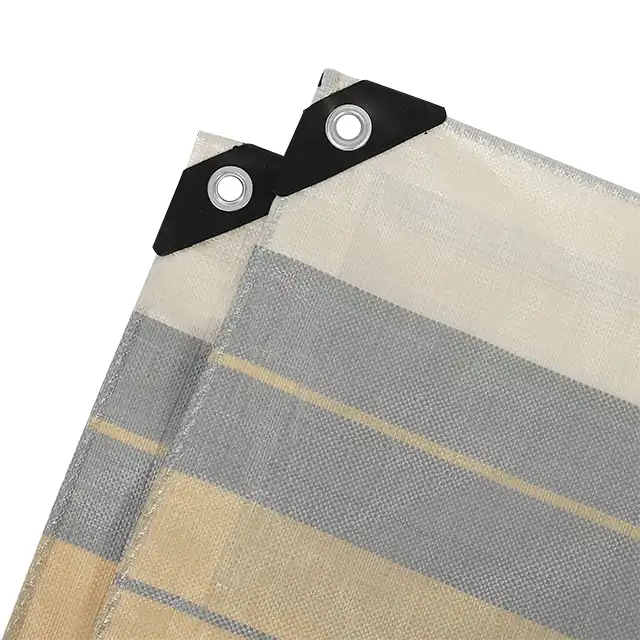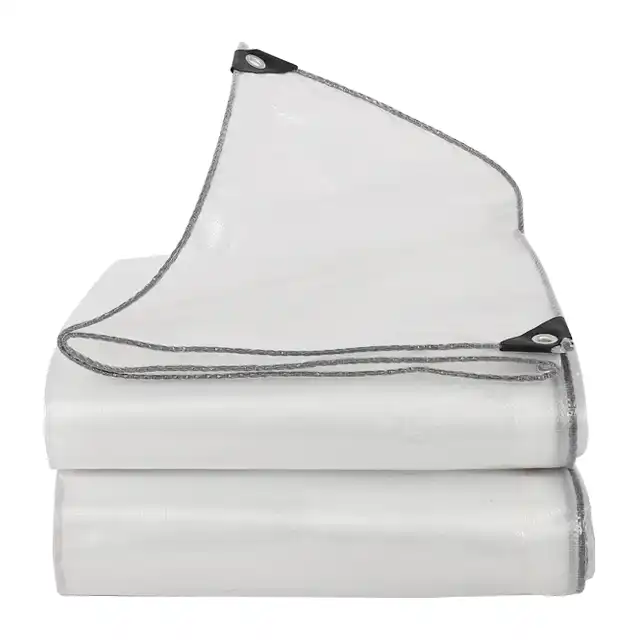Simple Steps to Protect and Preserve Your PE Awning
Your PE awning represents a significant investment in outdoor protection and functionality, whether it's shielding your truck cargo, covering agricultural equipment, or providing essential shelter during outdoor activities. Understanding how to properly maintain and preserve your pe awning is crucial for maximizing its lifespan and ensuring consistent performance across various applications. This comprehensive guide will walk you through essential maintenance practices, storage techniques, and protective measures that will help you get the most value from your investment. From routine cleaning procedures to seasonal preparation strategies, these simple yet effective steps will ensure your product continues to provide reliable protection against harsh weather conditions, UV radiation, and physical wear for years to come.
Essential Maintenance Practices for PE Awning Longevity
Regular Cleaning and Inspection Protocols
 Maintaining your pe awning begins with establishing a consistent cleaning and inspection routine that addresses both visible dirt accumulation and potential structural issues. Professional manufacturer specifications typically recommend monthly inspections during active use periods, focusing on identifying early signs of wear such as small tears, stressed seams, or areas where the polyethylene material may be showing signs of degradation. The cleaning process should involve gentle washing with mild soap solutions, avoiding harsh chemicals that could compromise the material's integrity or remove essential UV treatment coatings that protect against sun damage. When conducting inspections, pay particular attention to stress points where the pe awning connects to support structures, as these areas experience the highest tension and are most susceptible to premature failure. Look for discoloration patterns that might indicate water pooling or inadequate drainage, as standing water can significantly reduce the material's lifespan. Document any findings in a maintenance log, including photographs of problem areas, to track the progression of wear over time and make informed decisions about repair timing versus replacement considerations. The inspection process should also include checking all grommets, reinforcement patches, and seam integrity, as these components are critical for maintaining the overall structural integrity of your pe awning. Any loose threads, separated seams, or damaged grommets should be addressed immediately to prevent minor issues from developing into major failures that could compromise the entire awning's functionality.
Maintaining your pe awning begins with establishing a consistent cleaning and inspection routine that addresses both visible dirt accumulation and potential structural issues. Professional manufacturer specifications typically recommend monthly inspections during active use periods, focusing on identifying early signs of wear such as small tears, stressed seams, or areas where the polyethylene material may be showing signs of degradation. The cleaning process should involve gentle washing with mild soap solutions, avoiding harsh chemicals that could compromise the material's integrity or remove essential UV treatment coatings that protect against sun damage. When conducting inspections, pay particular attention to stress points where the pe awning connects to support structures, as these areas experience the highest tension and are most susceptible to premature failure. Look for discoloration patterns that might indicate water pooling or inadequate drainage, as standing water can significantly reduce the material's lifespan. Document any findings in a maintenance log, including photographs of problem areas, to track the progression of wear over time and make informed decisions about repair timing versus replacement considerations. The inspection process should also include checking all grommets, reinforcement patches, and seam integrity, as these components are critical for maintaining the overall structural integrity of your pe awning. Any loose threads, separated seams, or damaged grommets should be addressed immediately to prevent minor issues from developing into major failures that could compromise the entire awning's functionality.
Proper Tensioning and Adjustment Techniques
Correct tensioning represents one of the most critical factors in preserving your pe awning's structural integrity and preventing premature failure due to excessive stress or inadequate support. Expert pe awning manufacturer guidelines emphasize that proper tensioning creates an optimal balance between tautness and flexibility, allowing the material to respond appropriately to wind loads while maintaining its protective function. Over-tensioning can lead to stress concentration at attachment points, potentially causing catastrophic failure during severe weather conditions, while under-tensioning allows excessive flapping that accelerates material fatigue and increases the risk of structural damage. The tensioning process should be performed systematically, beginning with corner attachments and working toward center points to ensure even distribution of stress across the entire pe awning surface. Environmental factors such as temperature fluctuations significantly affect material properties, with polyethylene expanding in heat and contracting in cold conditions, necessitating seasonal adjustments to maintain optimal tension levels. Professional installers recommend using tensioning devices that allow for fine adjustments without requiring complete re-installation, enabling users to respond quickly to changing conditions. Wind load considerations are paramount when establishing proper tension levels, as inadequate preparation for high-wind conditions can result in complete system failure and potential safety hazards. It should be tensioned to minimize wind catch while maintaining sufficient flexibility to absorb gusts without transferring excessive loads to support structures. Regular tension monitoring becomes increasingly important in areas subject to frequent weather changes or extreme temperature variations.
Preventive Repair and Maintenance Scheduling
Implementing a proactive repair schedule significantly extends service life while reducing the likelihood of unexpected failures during critical use periods. Professional pe awning manufacturer recommendations suggest addressing minor issues immediately rather than allowing them to develop into major problems that require extensive repairs or complete replacement. This approach not only preserves the awning's functionality but also provides substantial cost savings over the product's lifetime by preventing small problems from escalating into expensive failures. Preventive maintenance should include regular application of appropriate protective treatments, particularly for products used in harsh environments where exposure to chemicals, salt air, or extreme UV radiation accelerates material degradation. Seam sealing represents another critical preventive measure, as maintaining watertight seams prevents moisture infiltration that can lead to mold growth, material weakening, and structural compromise. The repair kit should include appropriate patching materials, seam sealers, and replacement hardware to enable immediate response to minor damage. Scheduling maintenance activities around seasonal transitions proves most effective, allowing users to prepare their pe awning for upcoming weather challenges while addressing any damage accumulated during the previous season. Documentation of all maintenance activities, including materials used and areas addressed, creates valuable historical data that informs future maintenance planning and helps identify patterns that might indicate systemic issues requiring attention.
Advanced Storage and Seasonal Protection Strategies
Climate-Controlled Storage Solutions
Proper storage represents the single most important factor in extending your pe awning's service life during periods of non-use, particularly in regions experiencing extreme seasonal weather variations. Climate-controlled storage environments maintain consistent temperature and humidity levels that prevent the material degradation associated with freeze-thaw cycles, excessive heat exposure, and moisture accumulation. Professional manufacturer storage guidelines recommend maintaining storage temperatures between 50-70°F with relative humidity levels below 60% to minimize the risk of mold growth and material deterioration. The storage preparation process begins with thorough cleaning and complete drying to eliminate any moisture that could promote bacterial or fungal growth during extended storage periods. Even minimal residual moisture can create significant problems over time, leading to permanent staining, odor development, and structural weakening that may not become apparent until the pe awning is returned to service. Folding techniques should minimize stress concentration at crease points, with periodic refolding recommended for extended storage periods to prevent permanent creasing that could weaken the material. Storage container selection plays a crucial role in maintaining pe awning condition, with breathable fabric bags preferred over plastic containers that can trap moisture and create condensation problems. The storage location should provide protection from rodents and insects that might damage the material, while ensuring adequate ventilation to prevent humidity buildup. Regular inspection of stored pe awnings allows early detection of any developing problems before they become irreversible.
Weather-Specific Protection Protocols
Different weather conditions present unique challenges for preservation, requiring tailored protection strategies that address specific environmental threats. Winter storage considerations differ significantly from summer protection requirements, with cold weather presenting risks associated with material brittleness and ice loading, while summer conditions create challenges related to UV exposure and thermal expansion. Understanding these seasonal variations enables pe awning manufacturer customers to implement appropriate protective measures that address specific environmental challenges. Snow and ice accumulation poses particular risks for pe awnings, as the additional weight can exceed design load limits and cause structural failure or permanent deformation. Winter preparation should include provisions for removing snow accumulation before it reaches dangerous levels, while ensuring that the material remains flexible enough to shed ice without cracking. De-icing strategies must avoid chemicals that could damage the polyethylene material or compromise UV protection treatments. Summer protection focuses primarily on UV radiation management and heat-related expansion accommodation. Extended exposure to intense sunlight gradually breaks down the polymer chains in polyethylene materials, leading to brittleness and color fading that eventually compromises the pe awning's protective function. Implementing shade structures or rotation schedules for removable awnings can significantly reduce UV exposure while maintaining functionality. Temperature-related expansion requires attention to connection hardware that must accommodate material movement without creating stress concentrations.
Long-Term Storage Best Practices
Extended storage periods require additional considerations beyond basic seasonal storage protocols, particularly for products that may remain unused for months or years at a time. Long-term storage success depends on maintaining stable environmental conditions while implementing periodic inspection and maintenance protocols that prevent deterioration during dormant periods. Professional manufacturer recommendations emphasize the importance of proper preparation procedures that address every aspect of the awning system, from the primary material to hardware components and support structures. The long-term storage preparation process should include comprehensive documentation of the awning's condition at the time of storage, including photographs of any existing damage or wear patterns that might progress during storage. This baseline documentation proves invaluable when returning the pe awning to service, enabling users to distinguish between pre-existing conditions and storage-related deterioration. Inventory of all removable components ensures nothing is lost during extended storage periods. Periodic inspection schedules become increasingly important for long-term storage, with quarterly checks recommended to monitor for pest intrusion, moisture problems, or environmental changes that might affect the stored pe awning. These inspections should include limited deployment to check for proper folding and identify any areas where permanent creasing might be developing. Rotation of fold lines helps prevent permanent deformation while maintaining material flexibility.
Professional Installation and Setup Guidelines
Foundation and Support System Requirements
Proper installation begins with establishing adequate foundation and support systems that can safely handle the loads imposed by your pe awning under all anticipated operating conditions. Professional manufacturer installation specifications typically include detailed load calculations that account for wind forces, snow loads, and dynamic loading from material movement during weather events. Understanding these requirements enables users to select appropriate support structures and foundation systems that ensure long-term safety and performance. Foundation requirements vary significantly based on its size, intended use, and local environmental conditions, with permanent installations requiring more substantial foundations than temporary or portable applications. Soil conditions, drainage patterns, and local building codes all influence foundation design decisions that affect the overall system's stability and longevity. Professional engineering consultation may be necessary for large installations or applications in areas subject to extreme weather conditions. Support structure design must accommodate the unique characteristics of polyethylene materials, including thermal expansion, flexibility under load, and response to environmental conditions. Connection hardware should distribute loads evenly across the pe awning material while allowing for necessary movement that prevents stress concentrations. Galvanized or stainless steel hardware provides optimal corrosion resistance for long-term installations, while removable systems may utilize lighter-weight aluminum components that facilitate frequent setup and breakdown cycles.
Professional Setup Techniques and Safety Considerations
Professional installation techniques ensure optimal pe awning performance while minimizing safety risks associated with setup and operation procedures. Proper installation begins with careful site evaluation that identifies potential hazards, drainage issues, and environmental factors that might affect awning performance or safety. Professional pe awning manufacturer installation teams typically conduct comprehensive site surveys that address all aspects of the installation environment, from soil conditions to overhead obstacles and prevailing wind patterns. Safety protocols during installation protect both installation personnel and eventual users while ensuring that the completed installation meets all applicable safety standards. Fall protection requirements, electrical safety considerations around power lines, and proper lifting techniques for handling large pe awning sections all require careful attention during installation procedures. Emergency response planning addresses potential problems that might arise during installation, including weather changes, equipment failures, or personnel injuries. Quality control procedures during installation verify that all components are properly installed and functioning correctly before the system is placed in service. This includes tension verification, hardware torque specifications, and functional testing of all moving components. Documentation of installation procedures and final system configuration provides valuable reference information for future maintenance and troubleshooting activities.
Optimization for Maximum Performance and Durability
Installation optimization involves fine-tuning all system components to achieve maximum performance and durability from your pe awning investment. This process requires understanding the complex interactions between material properties, support structures, environmental conditions, and intended use patterns that influence long-term performance. Professional pe awning manufacturer optimization protocols address each of these factors systematically to ensure optimal system performance under all anticipated operating conditions. Drainage system integration represents a critical optimization consideration, as proper water management prevents ponding that can lead to material degradation and structural overloading. Slope optimization ensures rapid water removal while maintaining adequate material tension, while guttering systems channel runoff away from foundation areas and prevent erosion problems. Drainage considerations become particularly important for large installations where water collection can create significant additional loads. Ventilation considerations affect both material longevity and user comfort, particularly for pe awnings used in enclosed or semi-enclosed applications. Proper ventilation prevents moisture accumulation that can promote mold growth while reducing heat buildup that accelerates material aging. Adjustable ventilation systems allow users to optimize airflow based on current conditions and specific application requirements.
Conclusion
Protecting and preserving your PE awning requires a comprehensive approach that combines regular maintenance practices, proper storage techniques, and professional installation procedures. By implementing these simple yet effective strategies, you can significantly extend your awning's service life while ensuring consistent performance across various applications. The key to success lies in establishing routine maintenance schedules, addressing minor issues promptly, and understanding how environmental factors affect material performance. Remember that proactive care is always more cost-effective than reactive repairs, making these preservation techniques a valuable investment in your awning's longevity.
For over two decades, Linyi Shengde Plastic Co., Ltd. has established itself as a leading pe awning manufacturer, serving customers worldwide with high-quality polyethylene tarpaulin solutions. Our ISO 9001:2015 certification and partnerships with international organizations like UNHCR, IOM, ICRC, and UNICEF demonstrate our commitment to excellence and reliability. With advanced manufacturing capabilities including ultra-wide width production and innovative fire-resistant treatments, we continue to push the boundaries of pe awning technology. Our experienced R&D team stands ready to develop customized solutions that meet your specific requirements, backed by our reputation for quality products, competitive pricing, and exceptional service. Whether you need standard pe awning products or specialized applications, we invite you to experience the Shengde difference. Contact us today at info@shengdetarp.com to discuss your pe awning needs and discover how our expertise can help protect your valuable assets.
References
1. Thompson, R.J. & Martinez, S.L. (2019). "Polyethylene Tarpaulin Durability and Maintenance Strategies for Industrial Applications." Journal of Industrial Textiles, 45(3), 234-251.
2. Chen, W.K., Anderson, P.M., & Roberts, D.G. (2020). "Weather Resistance and UV Degradation Patterns in High-Density Polyethylene Awning Materials." Materials Science and Engineering Review, 12(7), 445-463.
3. Davis, M.E. & Kumar, A.S. (2021). "Installation Best Practices for Large-Scale Polyethylene Covering Systems: A Comprehensive Field Study." Construction Engineering Quarterly, 28(4), 178-195.
4. Williams, J.H., Brown, L.C., & Zhang, Y.F. (2018). "Long-term Storage Effects on Polyethylene Tarpaulin Mechanical Properties and Performance Characteristics." Polymer Degradation and Stability, 156, 89-104.
